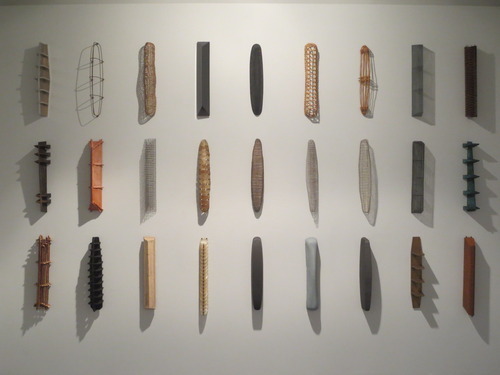El pasado viernes se celebró en Bergen la
Kulturnatt, algo así como una
noche en blanco en la que museos, galerías y otras instituciones culturales abren sus puertas gratuitamente, amplían su horario, y organizan actividades especiales con el objetivo de acercar sus propuestas a todo tipo de público. No desaprovechamos la oportunidad y dedicamos la tarde-noche a visitar todos los museos y galerías de Bergen que pudimos. Programa en mano nos lanzamos a la aventura. Y esto fue lo que vimos.
En Vågsbunnen, centro de la ciudad, encontramos el grueso de galerías de Bergen, entre ellas
S12 Galleri, en Skostredet 12 y Sparebankgaten 4. Aquí pudimos disfrutar de la exposición colectiva
Young and Loving! que cada año reúne a ocho artistas emergentes de distintas nacionalidades. Propuestas muy distintas, aunque todas centradas en la escultura y la instalación, con el
leitmotiv del ser humano y la naturaleza como punto de partida. Un pequeño paseo del que destacamos la interesante obra de la artista estadounidense Gloria Nash.
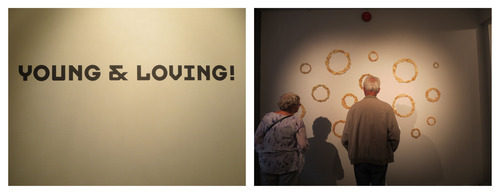
Muy cerca de S12 está la galería
3,14, segunda parada de nuestro periplo en la Kulturnatt. Aquí disfrutamos de la exposición de la artista brasileña
Angélica Dass,
Humanæ. Un
work in progress en el que incorpora fotografías de distintas personas de diferentes razas, edades y clases sociales catalogándolas con el número del sistema Pantone correspondiente con su color de piel. Como curiosidad, entre las 150 fotografías que componen la exposición encontramos una cara conocida, la del fotógrafo español
Alberto García-Alix.
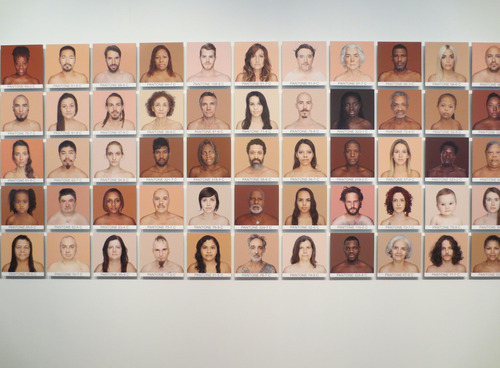
Paseando nos acercamos al
Museo de la Lepra en Kong Oscars gate 59, uno de nuestros lugares preferidos en Bergen. La ciudad fue una de las más afectadas por esta enfermedad a finales del siglo XIX y precisamente aquí, en el Hospital de St. George convertido hoy en museo, fue el lugar en el que el médico noruego Gerhard Armauer Hansen descubrió el bacilo causante de esta enfermedad. Un lugar con mucho encanto pero un tanto perturbador. En el museo de la Lepra, estructurado en torno a un pasillo central, se pueden ver las habitaciones que ocupaban los enfermos: sus camas, sus escritorios… También otras estancias dedicadas al personal médico con algunos de sus instrumentos, botes con medicación, etc. En la parte de arriba, más habitaciones, esta vez ocupadas con paneles en los que nos cuentan los casos reales de enfermos que estuvieron allí ingresados y sus espeluznantes retratos (algunos en fotografía y otros ilustrados). Sin duda alguna uno de los lugares más curiosos para visitar en Bergen.

Y cómo no, no podíamos dejar de ir a
KODE. Como ya era bastante tarde tan sólo visitamos KODE 4 y KODE 2. Vimos la segunda planta en donde se exponen la colección de arte vanguardista y el arte realizado en Bergen durante las décadas de los 60-80.
KODE 4 cuenta con un fondo bastante representativo de la primera vanguardia: obra expresionista (Klee, Vlaminck, Schmidt-Rottluff), cubista (Picasso, Rivera) y surrealista (Miró). De la segunda mitad del siglo destaca la colección del grupo CoBrA y las obras del maestro del Op-art Vasarely. Un interesante y rápido recorrido por algunos de los hitos de la Historia del Arte del siglo pasado que se completa con un acercamiento al arte que se realizó en Bergen en la segunda mitad del siglo. Bajo el título “The Bergen Avant-Garde 1966-1985” se recogen algunos de los testimonios plásticos que resultaron del trabajo del Grupo 66 y de otros artistas noruegos contemporáneos: instalaciones, publicaciones, fotografías, video-arte, etc.
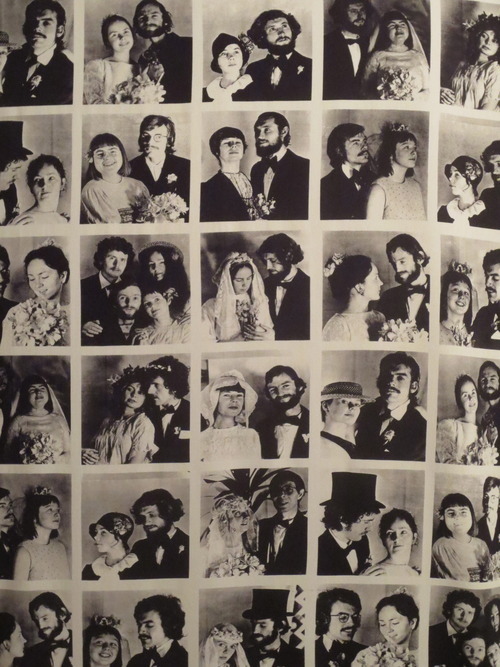
También visitamos rápidamente lo expuesto en la primera planta. Un recorrido bastante ecléctico con obras que iban desde iconos rusos del siglo XV a pintura paisajística noruega del XIX, pasando por pintura italiana dieciochesca y naturalezas muertas holandesas.
De camino a KODE 2 paramos en
Landmark, un pequeño edificio en el que se celebran conciertos y exposiciones y que además tiene una librería fantástica: INK. En Landmark visitamos la exposición del artista norteamericano
Robert Overby en la que pudimos ver sus esculturas, pinturas, fotos, instalaciones, collages. Divididas por un lado en aquellas que tratan fundamentalmente de la problemática del cuerpo, y por otro el tratamiento de la materia en bruto, con chapas metálicas, telas, etc. que nos recuerdan a las propuestas de otros artistas como Christo o Serra.
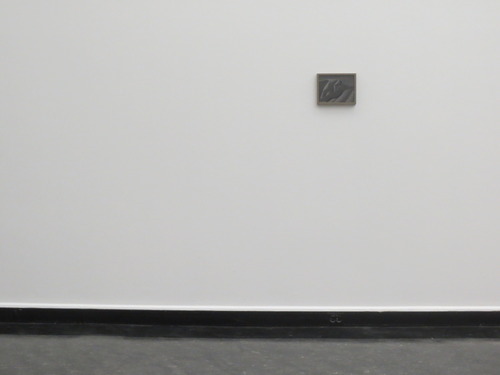
Ya en
KODE 2, por un lado, volvimos a ver el trabajo de artistas noruegos contemporáneos en el que se ven reflejadas las corrientes artísticas más importantes de la transvanguardia y la postmodernidad.Y por otro lado, conocimos el trabajo del artista noruego
Bård Breivik, a través de la completa retrospectiva que le dedica el museo. Obras en las que trabaja con distintos materiales que hacen alusión a la naturaleza, jugando con las formas y con elementos de la cultura noruega tan ligada al espacio natural.
Con la noche encima pensamos que nuestra Kulturnatt había acabado, pero de camino a casa no nos pudimos resistir a visitar el
Museo de la Hansa, uno de los más representativos de la ciudad. Fue toda una experiencia visitarlo de noche y ver las distintas estancias sin casi iluminación oyendo los suelos de madera crujir a nuestro paso. Sin duda una manera genial de terminar la velada de la Kulturnatt que esperemos, se repita muy pronto.
dos cabezas no se lo perderá.
//
Last Friday, Bergen hosted its annual
Kulturnatt, a
Nuit Blanche when museums, art galleries, and other cultural institutions open their doors to the public, free of charge, extending their usual schedules, and offering special activities for all audiences. We didn’t want to miss the chance, and so we spend our Friday evening dropping by as many galleries and museums as we could. Program in hand, we ventured into the city’s cultural evening. And here is what we saw.
Vågsbunnen, the city center, hosts most of the city’s art galleries. We started off with
S12 Galleri, in Skostredet 12 with Sparebankgaten 4, where we saw the collective exhibition
Young and Loving!that brings together eight international emerging artists every year. Radically different pieces, but all revolving around humans and nature through sculpture and installations. From this visit we’d like to highlight the work of the American artist Gloria Nash.
Very close from S12, we find
3,14, our second stop of the evening. Here we got to see
Humanæ, an exhibition by the Brazilian artist
Angélica Dass. This work in progress consists in portraits of people from different backgrounds and races catalogued according to the Pantone that matches their skin tone. Among the 150 pictures in the exhibition, we ran into a familiar face: the Spanish photographer
Alberto García-Alix.
From 3,14 we strolled to one of our favourite places in Bergen:
The Leprosy Museum, in Kong Oscars gate 59. In the late 1900s, Bergen was one of the most seriously affected places by leprosy. And it was here, at the former St. George’s hospital, now the museum, where the Norwegian doctor Gerhard Armauer Hansen discovered the bacillus that causes the disease.On both sides of the main corridor we can see what used to be the patients’ rooms, with their beds and desks, as well as the ones used by doctors and nurses, with their tools and medicine jars. The upstairs rooms have been emptied of their furniture to leave space to the explanatory panels that tell us the personal stories of the patients once hosted at the hospital, along with their eerie portraits, both as photographs and illustrations. Doubtlessly one of Bergen’s most unusual places to visit.
And of course, we had to stop by
KODE. Since it was already quite late, we only visited KODE 4 and KODE 2. We walked up to the second floor, where we saw the collection of avant-garde art and pieces made in Bergen from the 60’s to the 80’s.
KODE 4 owns quite a representative collection of the first avant-garde waves: expressionism (Klee, Vlaminck, Schmidt-Rottluff), cubism (Picasso, Rivera) and surrealism (Miró). From the second half of the 20th century, we can highlight the works by the CoBrA group, and those by Op-art master Vasarely. A quick and exciting journey through some of the past century’s Art History milestones, that ends with an approach to the art made in Bergen during the second half of the 20th century. “The Bergen Avant-Garde 1966-1985” is an appetizer of the work by Gruppe 66 and other contemporary Norwegian artists: installations, publications, photographs, video art, etc. We also did a quick tour of the first floor, an eclectic collection of works ranging from Russian icons from the 15th century to Norwegian landscape paintings from the 1800s, Italian paintings from the 1700s, or Dutch Still Lifes.
On our way to KODE 2, we stopped by
Landmark, a little cultural center that, besides concerts and exhibitions, is home to a wonderful bookstore called INK. In Landmark we saw an exhibition on
Robert Overby’s sculptures, paintings, photographs, installations and collage. There were pieces dealing with the issue of corporality and others with the treatment of raw materials —sheet metal, fabric, etc.—that brought to mind the work of other artists like Christo or Serra.
In
KODE 2 we went back to contemporary Norwegian art. The work exhibited in this museum showed the influence of transavantgarde and postmodernism. We also got to know
Bård Breivik’s work, through the exhaustive retrospective the museum offers. A diverse array of materials, shapes and elements of Norwegian culture that always relate back to nature.
Night had fallen so we decided to call it a day and started to head home, but on our way there we couldn’t resist to make a stop at
The Hanseatic Musem, one of the city’s highlights. It was such an experience to walk on it’s squeaky floors through half-lit rooms at night. Definitely a great way to end a soirée that we hope will happen again soon. We will be there.






